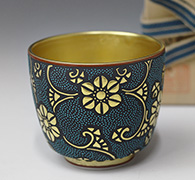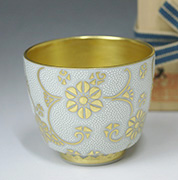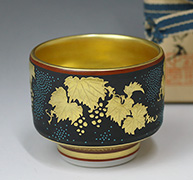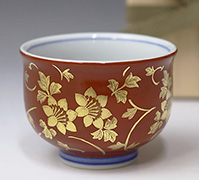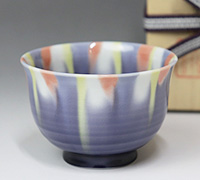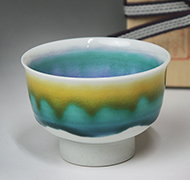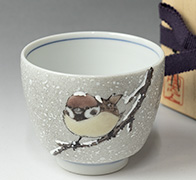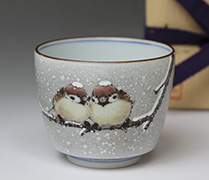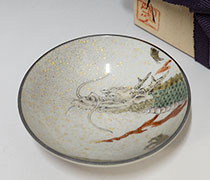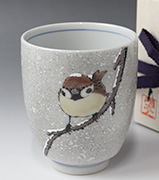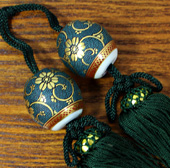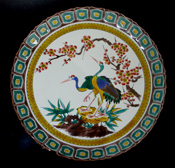Kutani ware (kutaniyaki) |
|||||||
Home > Kutani ware |
|||||||
|
|||||||
The origins of Kutani yaki can be traced back to the Edo period.The first kiln is said to have been established in 1655 by the feudal lord Maeda Toshiharu who sent craftsmen to Arita to study ceramic techniques. However there does seem to be evidence that porcelain shards were found in the Kutani area prior to this, inviting speculation that the history of pottery production in Kutani could be even older. Maeda's kiln produced ceramics for 60 years before inexplicably closing down. It is this period which is known as Ko-kutani. Kutani yaki was reborn a hundred years later in 1806 when the ruling Kaga clan invited Aoki Mokubei of Kyoto to the prefecture to revive the Kutani tradition. Starting from this time, various kilns developed their own styles of overglaze painting using the characteristic colors of green, purple, yellow, red and dark blue taken from the old Kokutani wares. The wealth of different motifs and patterns has greatly influenced the popularity of Kutani yaki both in Japan and in ceramic circles worldwide. Nowadays, young craftsmen draw from the techniques of their forefathers and the treasure trove of traditional designs to create fresh new pieces suitable for contemporary use. |
|||||||
|
|
|||||||
 |
|||||||
| About us | How to order | Privacy policy | Contact us (Order) | Artistic Nippon Home |
